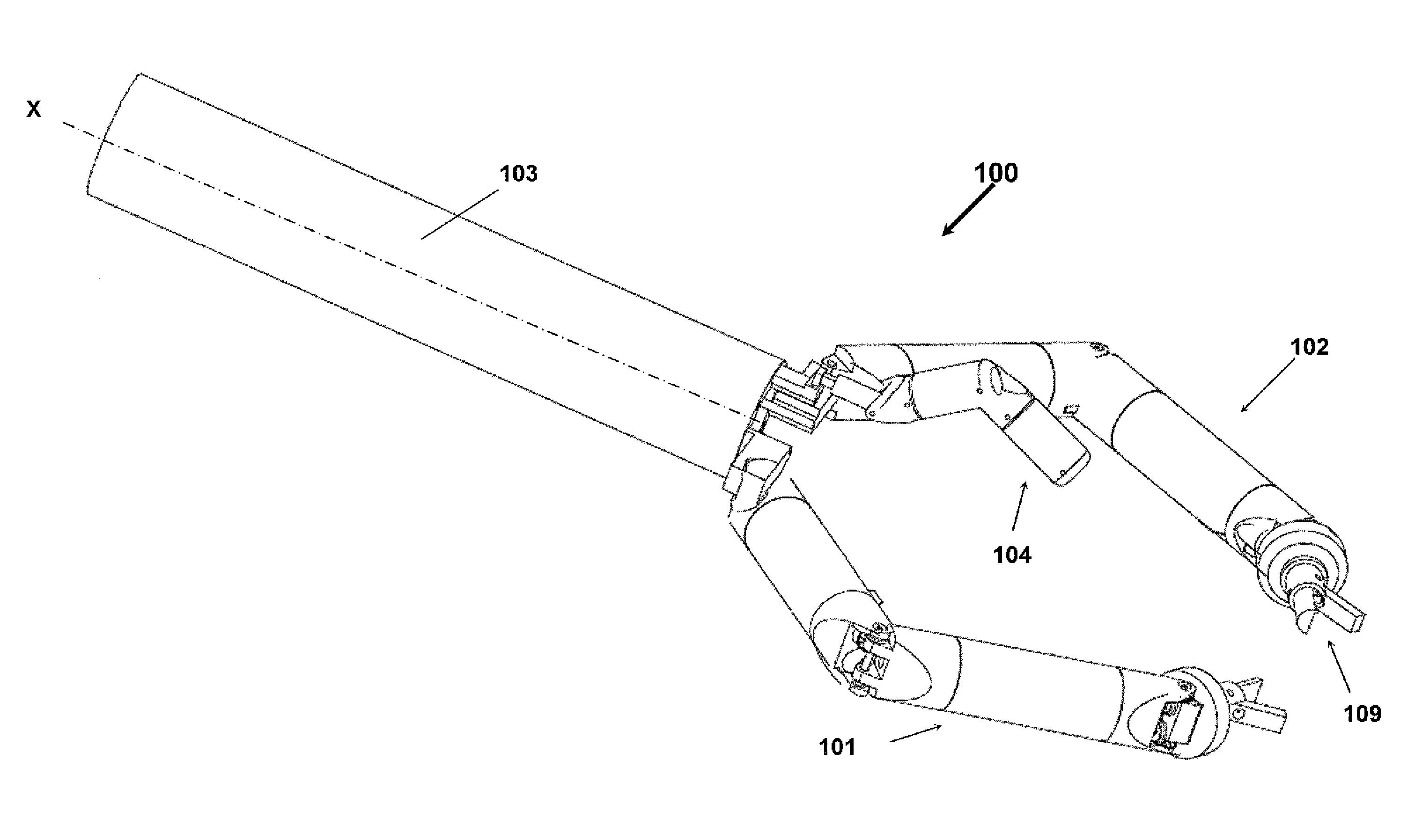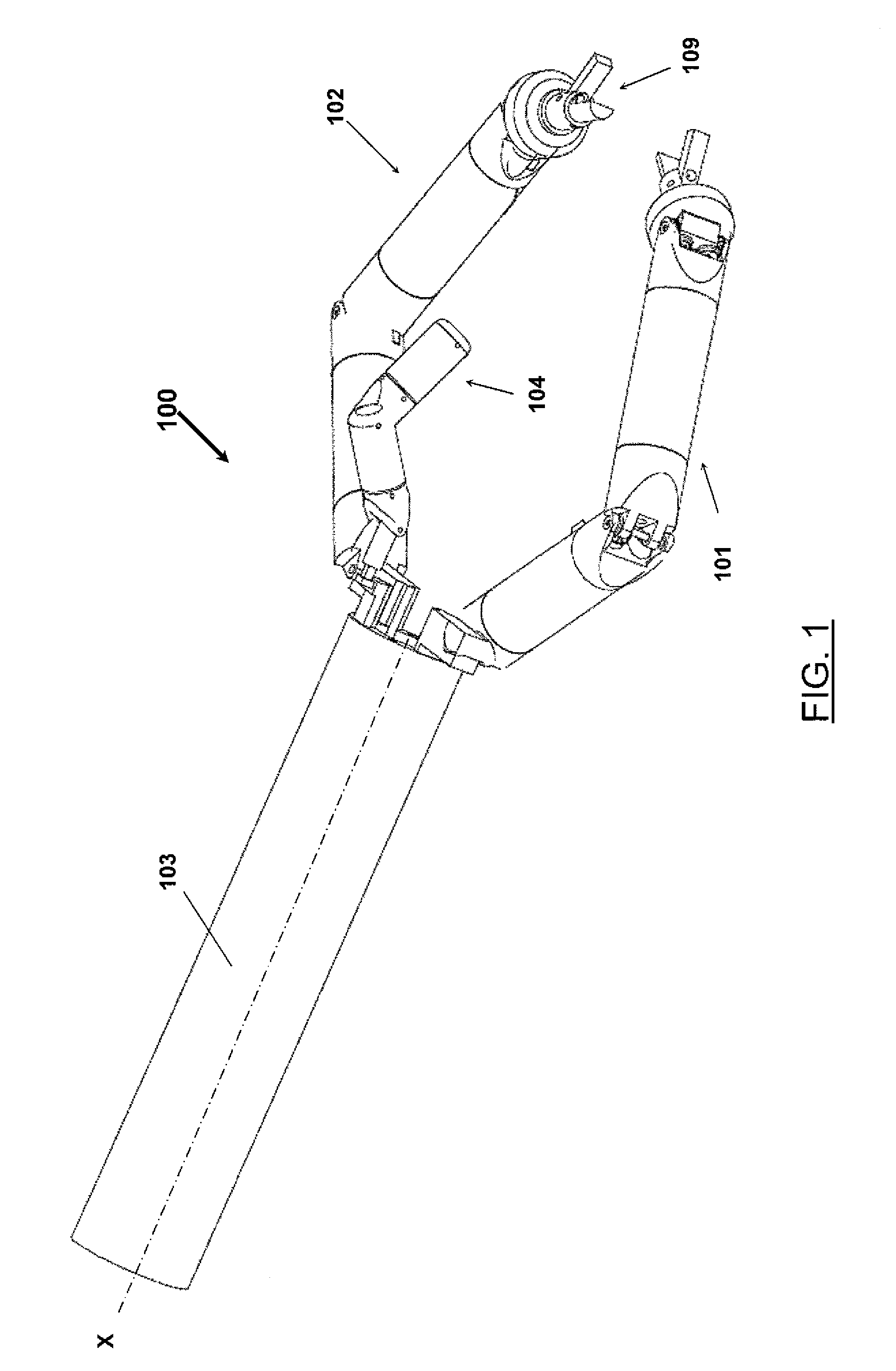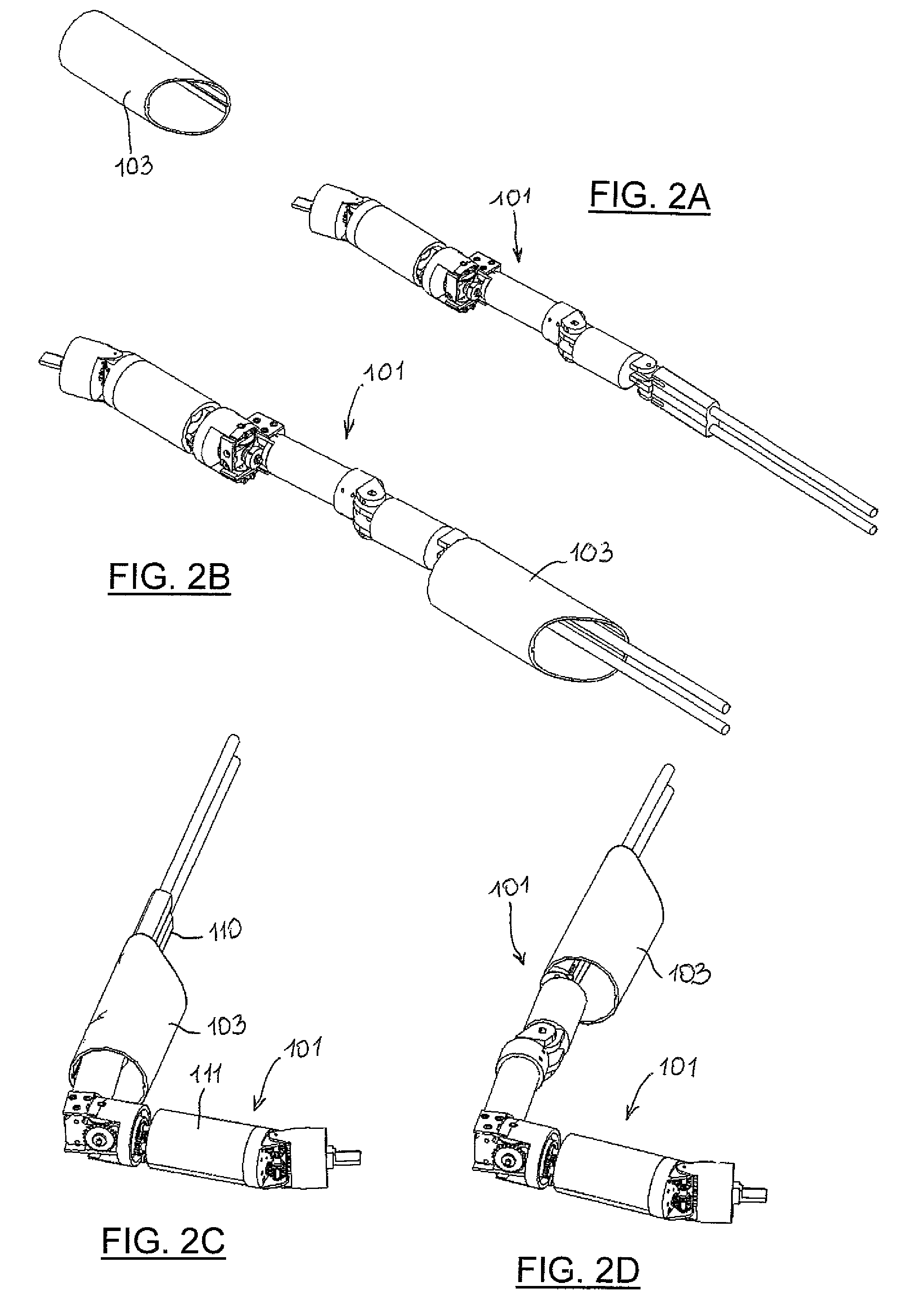Robotic apparatus for minimally invasive surgery
- Summary
- Abstract
- Description
- Claims
- Application Information
AI Technical Summary
Benefits of technology
Problems solved by technology
Method used
Image
Examples
Embodiment Construction
[0066]General Structure of the Robotic Apparatus
[0067]With initial reference to FIG. 1, a robotic apparatus for laparoscopic surgery according to a preferred embodiment of the invention is indicated in its entirety with 100.
[0068]In such figure, the apparatus 100 is represented in an exemplifying configuration which provides for a first and a second robotic arm, respectively indicated with 101 and 102, each having a plurality of articulated joints arranged longitudinally along the arm according to a serial structure. In particular, each arm 101, 102 has six degrees of freedom. The distal end portion (with respect to the surgeon) of each robotic arm 101, 102 may be equipped with surgical instruments, such as for example forceps 109, or with sensors, such as cameras or biometric sensors.
[0069]Alternative configurations of the apparatus 100 will be described hereinafter with reference for example to FIG. 27, in which the apparatus comprises a serial arm 101 and two hybrid parallel / seri...
PUM
| Property | Measurement | Unit |
|---|---|---|
| diameter | aaaaa | aaaaa |
| diameter | aaaaa | aaaaa |
| degrees of freedom | aaaaa | aaaaa |
Abstract
Description
Claims
Application Information
 Login to View More
Login to View More - R&D
- Intellectual Property
- Life Sciences
- Materials
- Tech Scout
- Unparalleled Data Quality
- Higher Quality Content
- 60% Fewer Hallucinations
Browse by: Latest US Patents, China's latest patents, Technical Efficacy Thesaurus, Application Domain, Technology Topic, Popular Technical Reports.
© 2025 PatSnap. All rights reserved.Legal|Privacy policy|Modern Slavery Act Transparency Statement|Sitemap|About US| Contact US: help@patsnap.com



